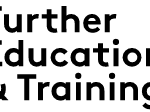Mindfulness-based approaches to learning are attracting more and more teachers, therapists and school administrators. Mindfulness refers to being completely in touch with and aware of the present moment, as well as taking a non-evaluative and non-judgmental approach to one's inner experience. These methods are helping students, as well as their teachers, learn how to manage and minimize stress, become active engaged participants, enhance memory and learning, improve classroom climates, and even develop supportive communities. Mindfulness-based programs empower students to self-regulate, develop emotional intelligence, and gain a sense of control over both their minds and bodies.
Classrooms today are faced with endless distractions including electronic devices, competitive classroom environments, ever-increasing administrative expectations, and both real and virtual violence. What’s more, competing diversions bombard learners, even when they are at home. This high-pressure lifestyle creates, for many, a “fight-flight-freeze response,” making learning uncomfortable and arduous. Additionally, when the limbic system is triggered, it is challenging to activate the prefrontal cortex and encode as well as process new information. However, the research now supports that neuroplasticity allows learners to make measurable changes in the way the minds functions at any age, but especially during the school age years. So helping students learn to manage their bodies and minds with developmentally appropriate mindfulness based practices, can make a significant difference in the lives of students and teachers, while helping to rehabilitate education as the whole (Mindfulness and Learning, 2016).












